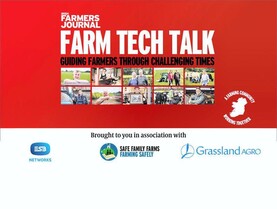It has been very much a year of two halves for Irish farmers sending beef cattle to the factories.
The first half of 2018 presented huge weather and feed challenges, but there was the consolation of a relatively strong beef price, with Irish factory processors benchmarking well against their EU counterparts. Even the gap with Britain closed to 15c/kg at one point.
The second half of 2018 began with a prolonged dry spell, which seriously hampered grass growth and silage crops in many parts of the country, though a good growing autumn offset this to some extent. Prices on the other hand started falling at the end of June and there has been no silver lining in the autumn as they have continued falling since to the point where Irish prime beef prices are now very much in the second division compared with the rest of the EU.
This has been caused by the combination of issues. The drought across Europe disrupted normal selling patterns, with cattle pushed out early, and the EU has produced more beef in 2018.
At a local level, Ireland will have killed 55,000 more cattle this year than in 2017.
As well as producing more, the EU has exported less beef in 2018 and to make a weak beef market even worse, the EU has imported more South American beef.






 This is a subscriber-only article
This is a subscriber-only article










SHARING OPTIONS: